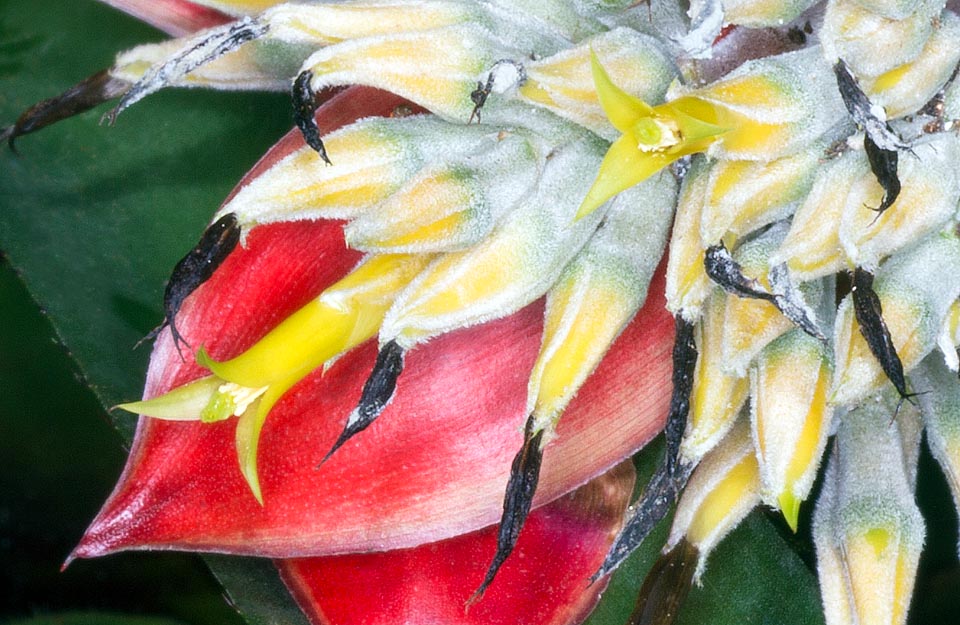Family : Bromeliaceae

Text © Pietro Puccio

English translation by Mario Beltramini
The species is native to Brazil (Alagoas and Pernambuco) where it lives in the coastal pluvial forest.
The name of the genus is the Greek substantive “αἰχμή” (aichme) = spear tip, with reference to the spiny apices of the sepals and of the floral bracts; the specific name is the Latin adjective “tomentosus, a, um” = tomentose, with reference to the inflorescence covered by a whitish tomentum.
Common names: caraguatá (Brazil).
The Aechmea tomentosa Mez (1986) is an evergreen herbaceous species, moncarpic (fructifies only once then dies), acaulescent, epiphytic, or less frequently terrestrial, 60-80 cm tall with the inflorescence, formed by an imbutiform rosette of leaves that form a central cavity usually full of water.

The Aechmea tomentosa of Brazil blooms only once and then dies. Epiphyte, at times terrestrial, has leaves that may exceed 1 m and a 60-80 cm inflorescence © Giuseppe Mazza
Sessile flowers with free sepals of greenish yellow colour and covered by whitish tomentum, mucronate, about 1,5 cm long, free lanceolate petals with mucronate apex of yellow colour, about 5 cm long, and tomentose ovary 1,4-1,6 cm long.

Sessile flowers with free greenish yellow sepals, covered by a whitish tomentum that has given the name to this species, little diffused in nature and in cultivation © Giuseppe Mazza
Species little diffused in nature as well as in cultivation, utilizable in open air in the tropical and humid subtropical climate regions, as epiphyte on the trees but also as terrestrial, on substrata rich of organic substance, very aerated and draining, in a slightly shady position. Elsewhere can be cultivated in pot on substrata having the same characteristics as above, with lowest winter temperatures preferably over the 16 °C. The substratum must be maintained constantly humid in summer, in winter must be allowed to dry up almost completely between the waterings, the environmental humidity, in presence of dry air and high temperatures, can be incremented with nebulizations utilizing water at ambient temperature and not calcareous in order to avoid unaesthetic spots on the leaves. In summer, some water may be left in the central cavity formed by the leaves rosette, renewing it frequently to avoid it becomes a larval bed of mosquitoes, whilst in winter, in presence of low temperatures, it is preferable to leave it dry in order to avoid possible rottenness.
→ For general notions about BROMELIACEAE please click here.
